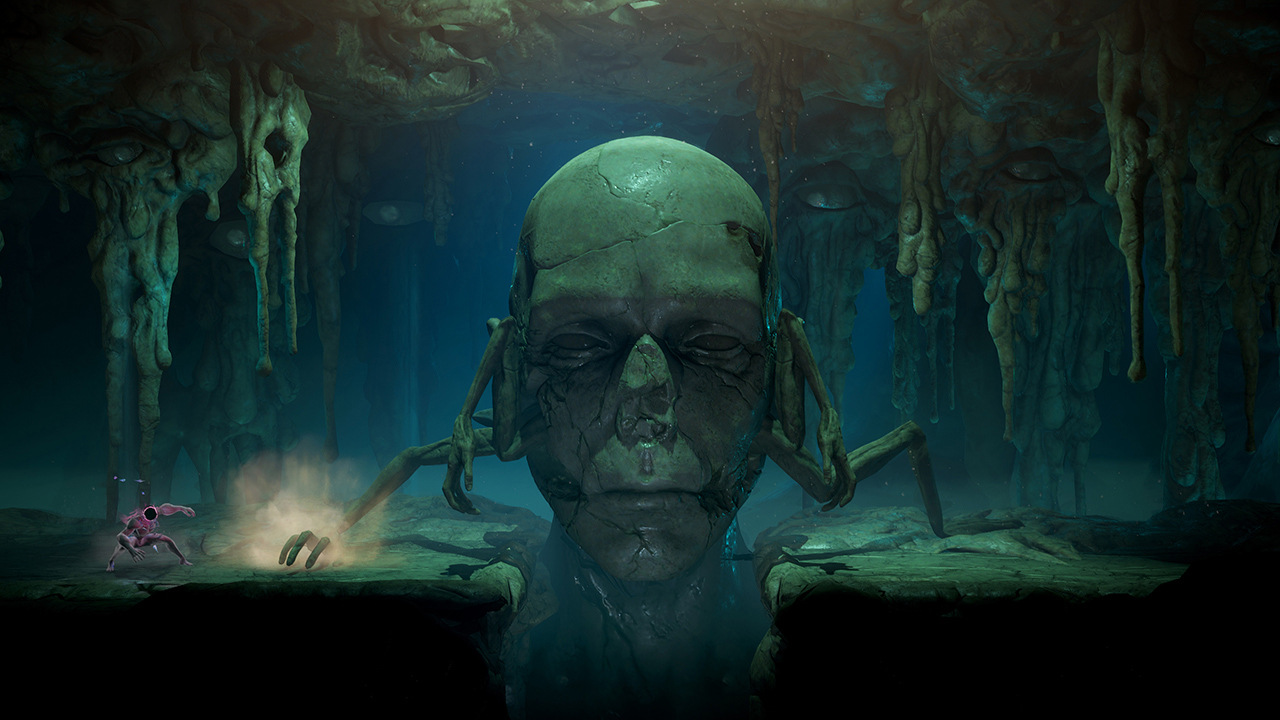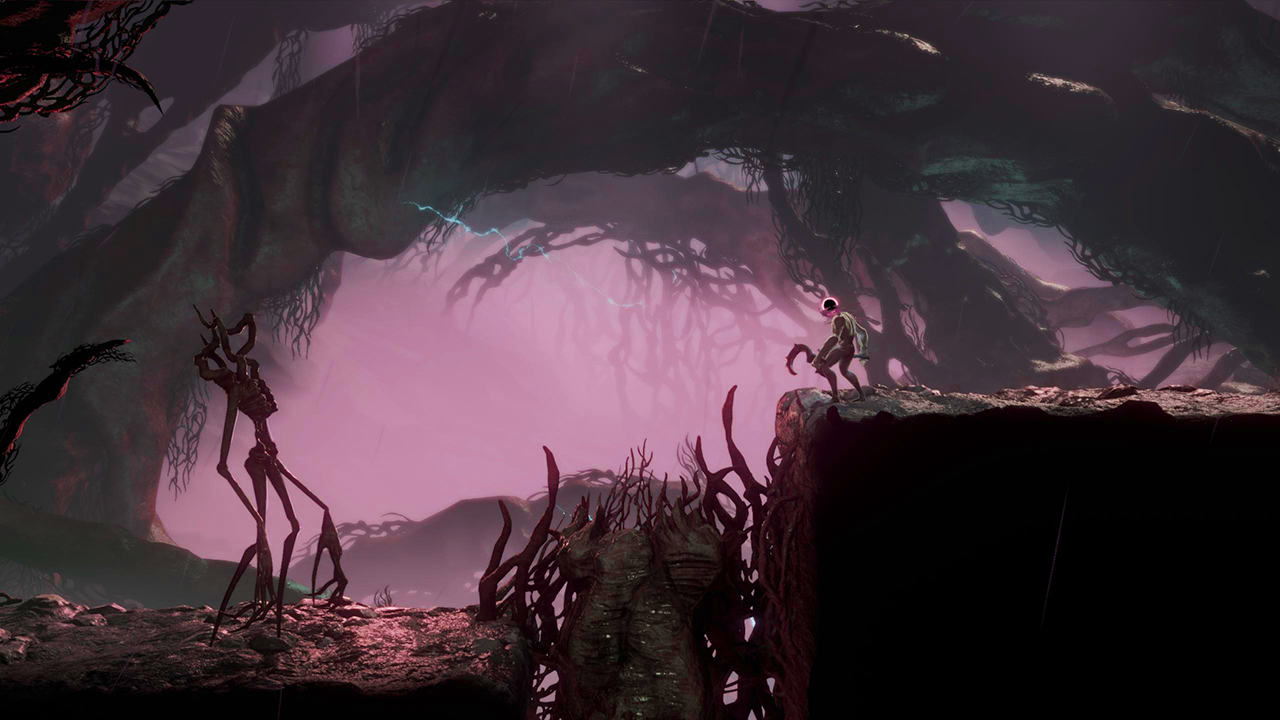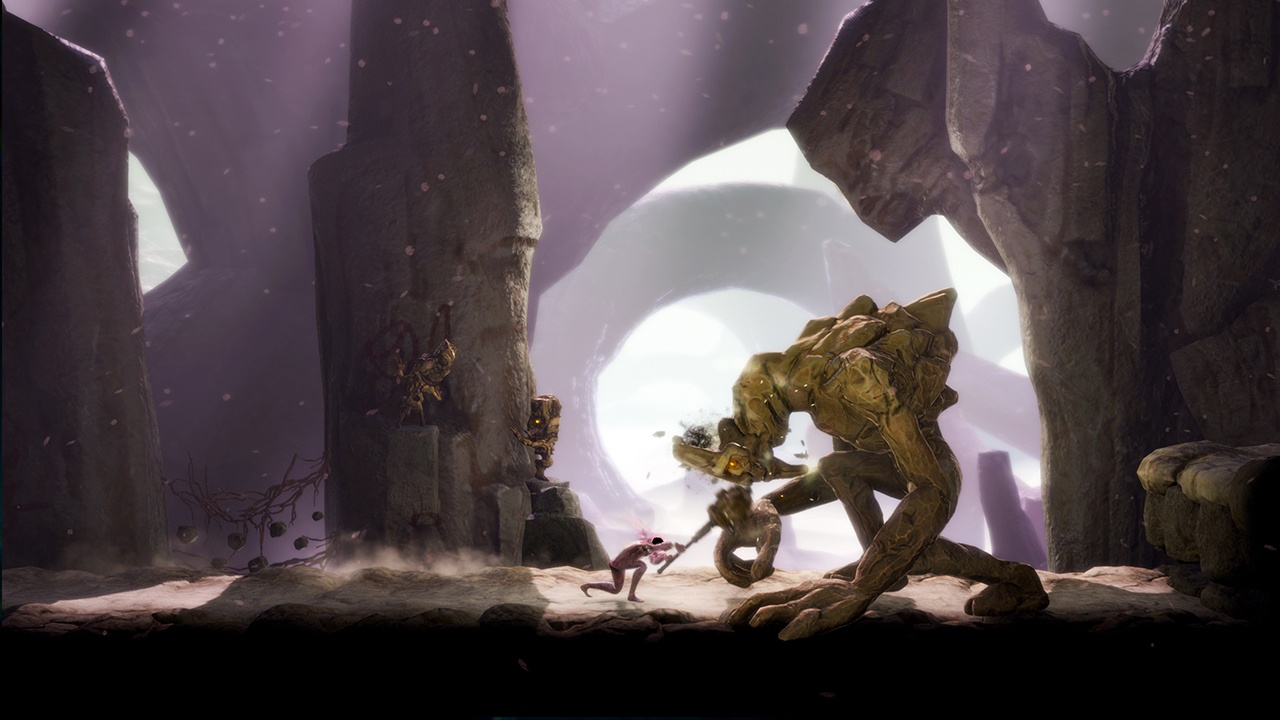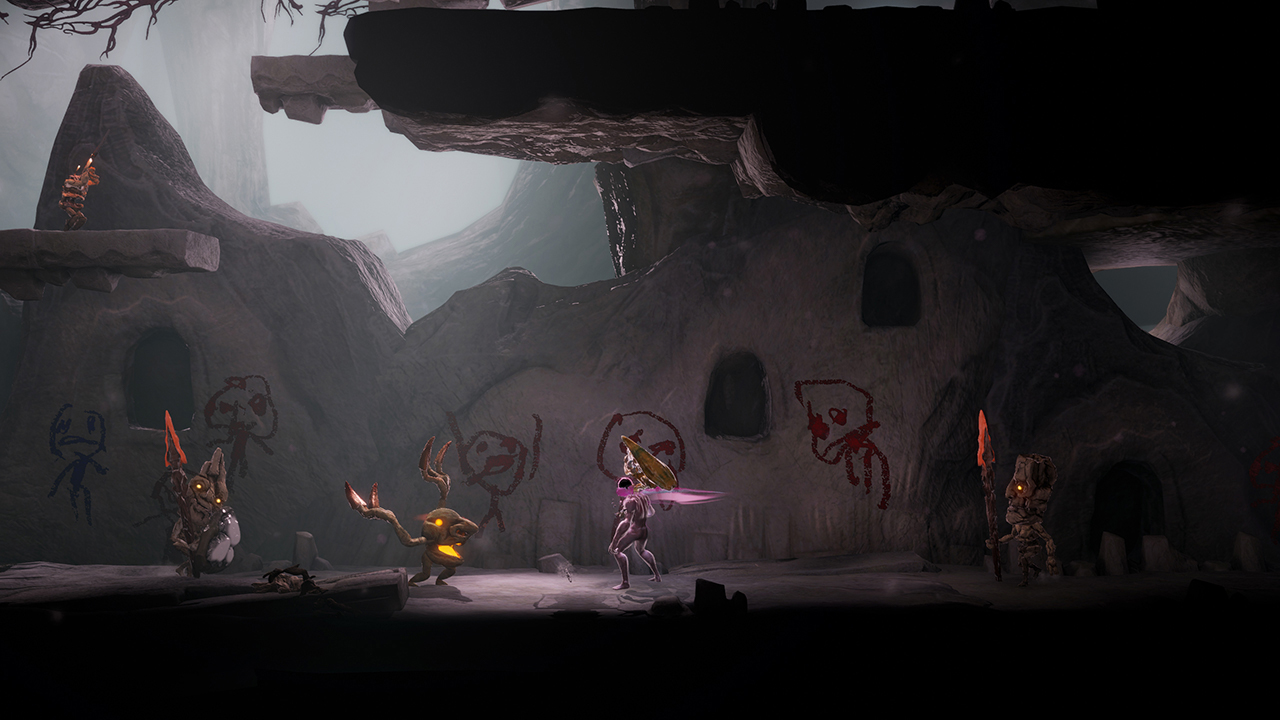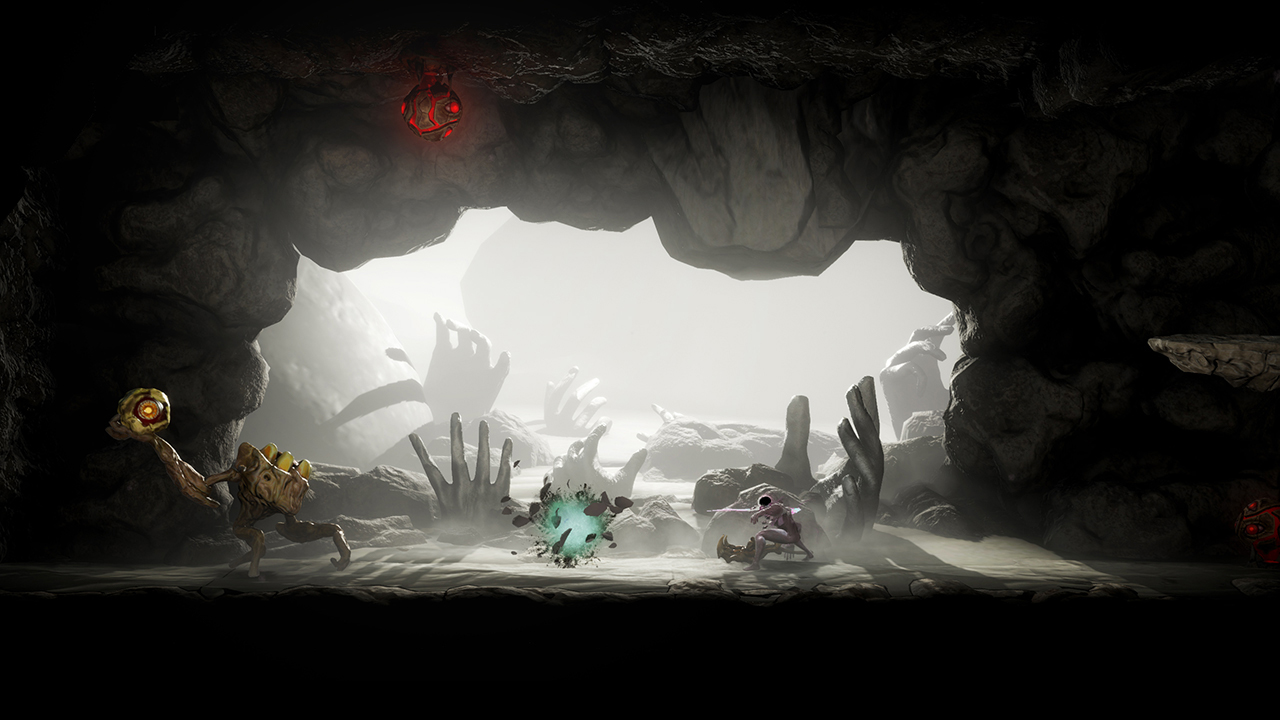"I was born one mornin' when the sun didn't shine."
Straight away, I appreciated many aspects of Grime Definitive Edition. The art style of this Soulslike action platformer is dingy, but detailed, and almost slick in its appearance. The action is heavy, but controllable. The characters are…unique. I mean, you play as a rock creature whose head can turn into a black hole to suck in enemies.
Before I explain that, I should point out that Grime was originally released for Windows in 2021. Ports to various consoles followed in 2022, with the Switch version arriving in January of this year. It’s good that Switch owners finally get to play this unique game, but it’s not the best place to do so. I’ll explain why in a bit. First, let’s consider the setup.
Grime begins with a somewhat unsettling scene of a stone giant breathing life into another. We then cut to the player character coming to life in a cave, by which I mean it assembles itself into an anthropomorphic rock. Enemies immediately appear, too, but you’re not given any weapons with which to fight them off—at least not right away. Instead, you’re taught how to parry their attacks by turning your head into the aforementioned black hole to suck them in. This destroys the early, weaker enemies, but can simply damage the tougher ones to come.
By focusing on parrying attacks, Grime changes up the way you usually play games of this type. Combat has to be close, and you have to put yourself in harm’s way, not avoid it. Even better, crushing your enemies in your black-hole-head stores up Breath, which you can release to replenish your health points. From the very beginning, you’re preparing yourself for what’s ahead.
You will eventually receive weapons from helpful NPCs you meet along the way, but to rely on them and their mutations would be a mistake, especially against the numerous bosses you’ll face. The key to victory here is to master the enemies’ attack patterns, learn when to parry and dodge, and discover their weaknesses. This takes time, meaning it also takes retries.
Thankfully, Grime isn’t as mean as it could be. When you lose a fight and you’re kicked back to your last save point (Surrogates, in this case), you get to restart with the items you’ve acquired at the level you’ve reached. Add in the upgrades you obtain on the way back, and you’re a bit more prepared for the rematch. Your knowledge of the enemy is what will ultimately help you pass the boss fights, but if you die against lesser enemies, retaining your items and levels can help you quickly push past them—useful for preventing rage quits.
I highlight that because Grime is set in a world that’s fascinating to explore. As mentioned at the onset, the visuals and lore are quite compelling. This world of mud and rock somehow also feels very lively and organic, albeit quite dark and oppressive. The enemies’ designs and attack methods continued to surprise me throughout, and the whole world grew effectively throughout the campaign, both visually and narratively; the plot elements are almost as fun to uncover as the game’s many secret areas.
Oh, and regarding that, the level design does often serve up its own frustrations. Progressing sometimes requires you to find hidden areas, and the map is purposefully not as helpful as I’d like. The environment also works against you at times, and not just via difficult jumps; aimless wandering became as much of an issue for me as the numerous restarts.
Unfortunately, I can’t score Grime Definitive Edition as high as I’d like to due to performance issues that interfere with overall experience. Load times become long in the weirdest places, and frame-rate drops make combat—and even just platforming—more difficult than it should be. That happens less in handheld mode, oddly enough, but I still preferred playing while docked because everything was easier to decipher on the big screen.
There also seems to be some input lag. At first, I thought this might be purposeful. Slow attacks felt right for a guy made of rock. But as the fights became more intense and the action started flowing more quickly, the maneuvering delays became more of an issue. You can still get used to it, I think, but there were numerous times when I felt the Switch port was betraying me.
That’s really what this review comes down to. Grime Definitive Edition gives action-platformer fans a markedly different experience that’s bound to stick with them, but the Switch port makes it hard to stick with the game. In addition to solving the performance issues, I wonder if Grime would also look quite a bit cooler on other systems. At least this definitive edition gives players immediate access to all available DLC, and it comes at a price that’s more than fair for the time you’ll spend playing it through to completion, if you do.
Review: Grime Definitive Edition (Nintendo Switch)
Fair
Grime Definitive Edition is a fascinating action-platforming experience that I can’t recommend experiencing on the Switch. Its unique visual and narrative presentations will compel genre fans to the end, but the game would surely be better enjoyed without Switch performance problems dragging it down.

